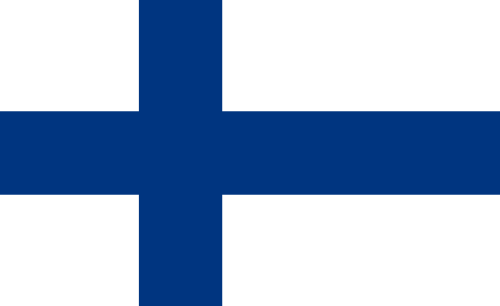
Country Flags by Continent
|
|
The flag of Finland (Finnish: Suomen lippu, Swedish: Finlands flagga), also called Siniristilippu ("Blue Cross Flag"), dates from the beginning of the 20th century. On a white background, it features a blue Nordic cross, which represents Christianity. The state flag has a coat of arms in the centre, but is otherwise identical to the civil flag. The swallow-tailed state flag is used by the military. The presidential standard is identical to the swallow-tailed state flag but also has in its upper left corner the Cross of Liberty after the Order of the Cross of Liberty, which has the President of Finland as its Grand Master. Like Sweden's, Finland's national flag is based on the Scandinavian cross. It was adopted after independence from Russia, when many patriotic Finns wanted a special flag for their country, but its design dates back to the 19th century. The blue coloring is said to represent the country's thousands of lakes and the sky, with white for the snow that covers the land in winter. This color combination has also been used over the centuries in various Finnish provincial, military, and town flags.
Colours
There is no official RGB definition for the colors, because its color gamut is too narrow. From the CIE L*a*b* colors the unofficial approximations in sRGB are (range 0–255): blue R=24, G=68, B=126, red R=181, G=28, B=49 and yellow R=237, G=167, B=0. The yellow color actually lies outside the sRBG colorspace. The blue color is called "sea blue", which is a dark to medium blue. It is not very dark navy blue, and certainly not any bright or greenish shade such as turquoise or cyan. It may be substituted for heraldic tincture azure.
Red and yellow are used in the coat of arms that appears on the state flag. |

